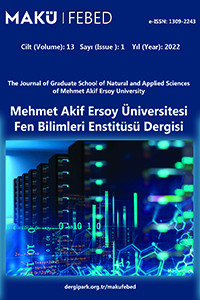Yüzeysel Zemin İyileştirmesinde Yeni Bir Malzeme Olarak Atık Gazbeton Kullanımı
Günümüzde yaygın olarak kullanılan yapı malzemelerinden biri olan gazbetonun yakın gelecekte inşaat yıkıntı atıklarından biri olacağı açıktır. Bu araştırmada, atık gazbetonun zemin iyileştirmesinde kullanılabilirliği araştırılmıştır. Gazbeton malzemesi, öğütülerek kullanılmış ve farklı zemin tiplerine etkisini araştırmak amacı ile yüksek plastisiteli kil olarak bir bentonit (CH), bir düşük plastisiteli kil zemin (CL) ve bir kum zemin (SP) numuneleri ile karıştırılarak deneyler yapılmıştır. Öğütülmüş gazbeton atığı (ÖGA) katkısı ile kil zeminlerin serbest basınç mukavemeti ve CBR değerlerinin, kum zeminin ise kayma mukavemeti açısının arttığı belirlenmiştir. Ayrıca CH numunesinin şişme basıncı ve şişme yüzdesinde önemli derecede azalmalar tespit edilmiştir.
Anahtar Kelimeler:
Zemin iyileştirme, yıkıntı atığı, gazbeton, kil, kum
Reuse of Aerated Autoclaved Concrete Waste as a New Material in Shallow Soil Stabilization
Nowadays, the autoclaved aerated concrete (AAC) is one of the most widely used construction materials. Hence, there will be a huge amount of AAC waste in the near future. In this research, an experimental research study within the scope of investigating the potential use of autoclaved aerated concrete (AAC) waste in the shallow soil stabilization was presented. Three types of subgrades that are a high plasticity bentonite clay (CH), a low plasticity clay (CL) and a sand (SP) were used with the pulverized autoclaved aerated concrete waste (PAACW). It was found that PAACW additive increased the unconfined compression strength and CBR of the clay soils and the internal friction angle of the sand. Also, addition of PAACW significantly decreased the swelling potential and swelling pressure of CH.
Keywords:
Soil improvement, demolition waste, autoclaved aerated concrete, clay, sand,
___
- A. Arulrajah, J. Piratheepan, M.M. Disfani, M.W. (2013). Geotechnical and geoenvironmental properties of recycled construction and demolition materials in pavement subbase applications, Journal of Materials in Civil Engineering, 25 (8), 1077-1088.
- Alpyürür M., Zemin iyileştirmesinde öğütülmüş gazbeton kullanımı, Yüksek Lisans Tezi, İTÜ, Fen Bilimleri Enstitüsü, İstanbul, 2016.
- ASTM D1883-16, (2016). Standard Test Method for California Bearing Ratio (CBR) of Laboratory-Compacted Soils, ASTM International, West Conshohocken, PA.
- ASTM D2166/D2166M-16, (2016). Standard Test Method for Unconfined Compressive Strength of Cohesive Soil, ASTM International, West Conshohocken, PA.
- ASTM D3080/D3080M-11, (2011). Standard Test Method for Direct Shear Test of Soils Under Consolidated Drained Conditions, ASTM International, West Conshohocken, PA.
- ASTM D4318-10, (2010). Standard Test Methods for Liquid Limit, Plastic Limit, and Plasticity Index of Soils, ASTM International, West Conshohocken, PA.
- ASTM D4546-14, (2014). Standard Test Methods for One-Dimensional Swell or Collapse of Soils, ASTM International, West Conshohocken, PA.
- ASTM D6913-04, (2009). Standard Test Methods for Particle-Size Distribution (Gradation) of Soils Using Sieve Analysis, ASTM International, West Conshohocken, PA.
- ASTM D7928-16, (2016). Standard Test Metot for Partice-Size Distribution (Gradation) of Fine-Grained Soils Using the Sedimentation (Hydrometer) Analysis, ASTM International, West Conshohocken, PA.
- ASTM D854-14, (2014). Standard Test Methods for Specific Gravity of Soil Solids by Water Pycnometer, ASTM International, West Conshohocken, PA.
- Bennert, T., Papp W.J., Jr., Maher, A., Gucunski, N. (2000). Utilization of construction and demolition debris under traffic-type loading in base and subbase applications, Transportation Research Record, 1714, 33-39.
- Dongxing X., Houben L.J.M., Molenaar A.A.A., Zhonghe S. (2010). Cement treated recycled demolition waste as a road base material, Journal of Wuhan University of Technology-Mater. Sci. Ed., 25 (4), 696-699.
- Etminan E., Soft soil stabilization using fly ash, polypropylene, copolymer and VHP., Yüksek Lisans Tezi, İTÜ, Fen Bilimleri Enstitüsü, İstanbul, 2012.
- European Environment Agency, (2009). Diverting Waste from Landfill – Effectiveness of Waste management Policies in the European Union. http://www.eea.europa.eu/publications/diverting-waste-from-landfill-effectiveness-of-waste-management-policies-in-the-european-union/at_download/file, erişim tarihi 10.2.2018
- Han J. (2015). Principles and Practice of Ground Improvement, Wiley, New Jersey, A.B.D.
- Herrador, R., Pérez, P., Garach, L., Ordóñez, J. (2011). Use of recycled construction and demolition waste aggregate for road course surfacing, Journal of Transportation Engineering, 138 (2), 182-190.
- Md. A. Rahman, M. Imteaz, A. Arulrajah, M.M. Disfani (2014). Suitability of recycled construction and demolition aggregates as alternative pipe backfilling materials, Journal of Cleaner Production, 66, 75-84.
- Nuno Cristelo, Castorina Silva Vieira, Maria de Lurdes Lopes, (2016). Geotechnical and geoenvironmental assessment of recycled construction and demolition waste for road embankments,Procedia Engineering, 143, 51-58.
- Rafaela Cardoso, Rui Vasco Silva, Jorge de Brito, Ravindra Dhir, (2016). Use of recycled aggregates from construction and demolition waste in geotechnical applications: A literature review, Waste Management, 49, 131-145.
- Serdar Ulubeyli, Aynur Kazaz, Volkan Arslan (2017). Construction and demolition waste recycling plants revisited: Management issues, Procedia Engineering, 172, 1190-1197.
- Tam V.W.Y., Tam C.M. (2006). A Review on the viable technology for construction waste recyling, Resources, Conservation and Recycling., 47 (3), 209-221.
- Türk Yapı Sektörü Raporu 2015, http://www.yapi.com.tr/TurkYapiSektoruRaporu2015/index.html#160/, erişim tarihi 22.08.2016.
- Xuan D.X., Houben L.J.M., Molenaar A.A.A., Shui Z.H. (2012). Mixture optimization of cement treated demolition waste with recycled masonry and concrete, Materials and Structures, 45 (1), 143-151.
- Wilson, S., (1970). Suggested Method of Test for Moisture-Density Relations of Soils Using Harvard Compaction Apparatus," Special Procedures for Testing Soil and Rock for Engineering Purposes: Fifth Edition, STP38484S, C. ASTM, Ed., ASTM International, West Conshohocken, PA, 101-103.
- Yayın Aralığı: Yılda 2 Sayı
- Başlangıç: 2010
- Yayıncı: Burdur Mehmet Akif Ersoy Üniversitesi
Sayıdaki Diğer Makaleler
İklim Değişikliğine Karşı Mekânsal Kırılganlığın ve Uyum Kapasitesinin Belirlenmesi: Alanya Örneği
Duygu GÖKCE, Z.Betül PANCAR, Ali TÜRK
Farklı Gıdalardan İzole Edilen Laktik Asit Bakterileri’nin Antibiyotik Direnç Profilleri
Ebru DEMİR, Gülden BAŞYİĞİT KILIÇ, Eyüp UŞAN
Kerem HEPDENİZ, İbrahim İskender SOYASLAN
Akademik Ofislerin Verimlilik Üzerine Değerlendirilmesi: Mehmet Akif Ersoy Üniversitesi Örneği
Duygu KURTOĞLU, M. Rafet KISTIR
NaOH ile Modifiye Edilmiş Kızılçam (Pinus brutia Ten.) Yongalarının Levha Üretimindeki Performansı
Anadolu’nun Tarihi Yolları ve Ankara için Bir Yeşil Yol Planlama Olanağı
Yüzeysel Zemin İyileştirmesinde Yeni Bir Malzeme Olarak Atık Gazbeton Kullanımı
